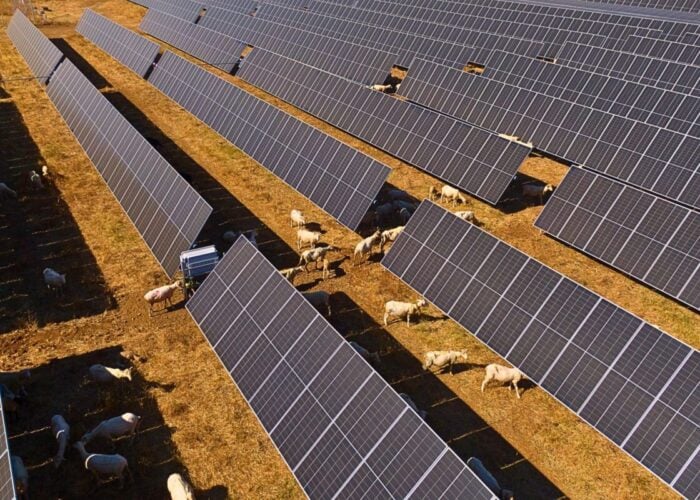
Driven by declining module costs, solar was by far the world’s leading power-generating technology installed in 2019, making up 45% of new capacity.
That is according to a new report from BloombergNEF (BNEF), which revealed a record 118GW of new PV was constructed last year, with the technology the most popular choice in a third of countries, including the US, India and Australia. In all, 81 countries built at least 1MW of solar in 2019.
Unlock unlimited access for 12 whole months of distinctive global analysis
Photovoltaics International is now included.
- Regular insight and analysis of the industry’s biggest developments
- In-depth interviews with the industry’s leading figures
- Unlimited digital access to the PV Tech Power journal catalogue
- Unlimited digital access to the Photovoltaics International journal catalogue
- Access to more than 1,000 technical papers
- Discounts on Solar Media’s portfolio of events, in-person and virtual
The report highlights the gains solar has made in the last decade, rising from just 43.7GW of total capacity installed in 2010 to 651GW as of year-end 2019. Solar in 2019 also moved past wind (644GW) to become the fourth-largest source of power on a capacity basis, behind coal (2,089GW), gas (1,812GW), and hydro (1,160GW).
“Sharp declines in solar equipment costs, namely the modules that go on rooftops and in fields, have made this technology widely available for homes, businesses and grids,” said Luiza Demôro, BNEF analyst and lead author of the study. “PV is now truly ubiquitous and a worldwide phenomenon.”
Despite the positive figures for 2019, BNEF revealed in July that investment in solar capacity was down in the first half of 2020 by 12% year-on-year to as the COVID-19 pandemic hit both project financing and scheduled auctions. The research company, however, expects the market to bounce back, with 140-178GW of new solar expected to be built in 2022.
39GW of new coal capacity
While gains were made by renewables last year, global coal capacity surged 32% over the decade to reach 2.1TW in 2019, BNEF said. Over 113GW of net coal retirements in developed nations during the 2010s could not offset the 691GW of net new coal in emerging markets. In 2019, the world saw 39GW of net new coal capacity installed, up from 19GW in 2018.
“Wealthier countries are moving quickly to mothball older, largely inefficient coal plants because they can’t compete with new gas or renewables projects,” said Ethan Zindler, head of Americas at BNEF. “However, in less developed nations, particularly in south and southeast Asia, new, more efficient coal plants continue to come online – often with financial support from Chinese and Japanese lenders.”
BNEF estimates that global power sector CO2 emissions were down 1.5% in 2018-2019 as declines in the US and EU more than offset an increase from China, which accounted for 37% of the 2019 total. The US followed with 14%.







